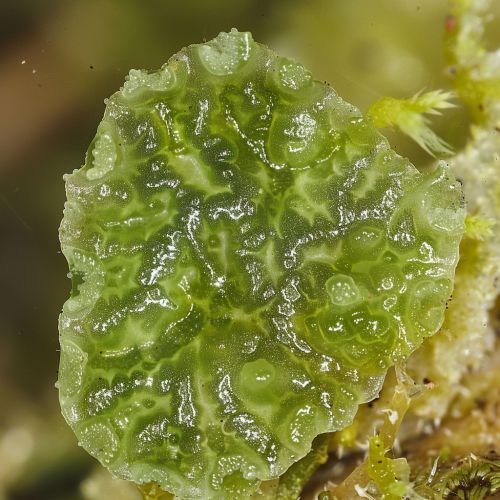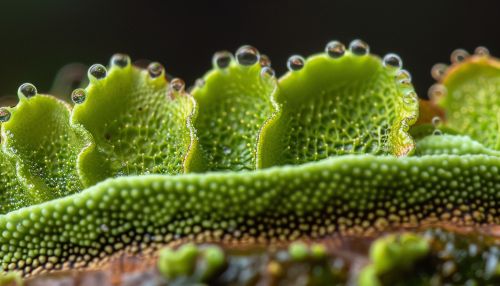Hornwort
Introduction
Hornworts are a group of non-vascular plants constituting the division Anthocerotophyta. With approximately 100-150 species worldwide, they are the smallest group of the three divisions of bryophytes, which also include mosses and liverworts. Despite their relatively small number, hornworts play a significant role in the ecosystem, particularly in nutrient cycling in forests and wetlands.
Morphology
Hornworts typically have a flattened, green, and thalloid (not divided into stems and leaves) body known as a thallus. The thallus is often undifferentiated into tissues, but may have a region of cells specialized for photosynthesis and another for the absorption of water and minerals.


The name "hornwort" comes from the elongated horn-like structure, which is the sporophyte. Unlike the sporophytes of mosses and liverworts, those of hornworts are persistent and grow throughout the life of the plant. The sporophyte grows from a meristem near its base, instead of from its tip as in mosses and liverworts. This growth pattern gives the sporophyte its characteristic horn-like appearance.
Reproduction
Hornworts reproduce both sexually and asexually. In sexual reproduction, the male sex organs, or antheridia, produce biflagellate sperm that swim to the archegonia, the female sex organs, where fertilization occurs. The fertilized egg, or zygote, develops into a sporophyte, which remains attached to the gametophyte.
Asexual reproduction in hornworts occurs through the production of asexual reproductive structures called gemmae. Gemmae are small pieces of tissue that are dispersed by water or wind and can grow into a new gametophyte.
Ecology
Hornworts are found worldwide, though they tend to prefer humid environments. They are often found in forests, wetlands, and soil, especially disturbed soil. Some species are aquatic. Hornworts are able to colonize a wide range of habitats due to their ability to tolerate a wide range of light intensities, temperatures, and soil conditions.
Hornworts play a significant role in the ecosystem, particularly in nutrient cycling. They are known to fix carbon dioxide through photosynthesis and to fix nitrogen through a symbiotic relationship with cyanobacteria.
Taxonomy
The division Anthocerotophyta is divided into two classes: Anthocerotopsida and Leiosporocerotopsida. These are further divided into five families, 12 genera, and approximately 100-150 species.
Evolution
Hornworts are thought to be among the earliest land plants, with fossils dating back to the early Devonian period, about 400 million years ago. They share many characteristics with early land plants, such as a lack of vascular tissue, a single chloroplast per cell, and the presence of phragmoplasts during cell division.
